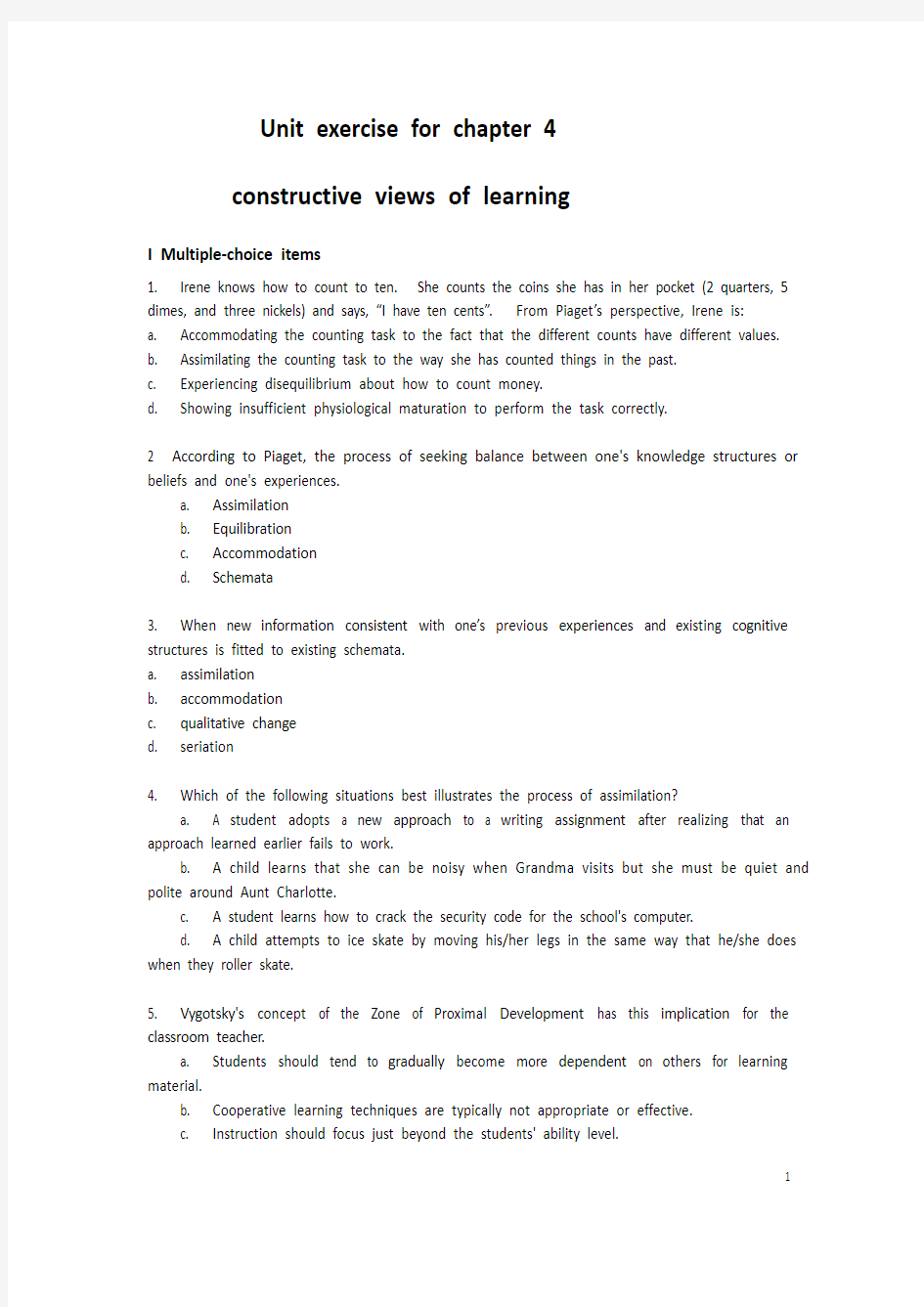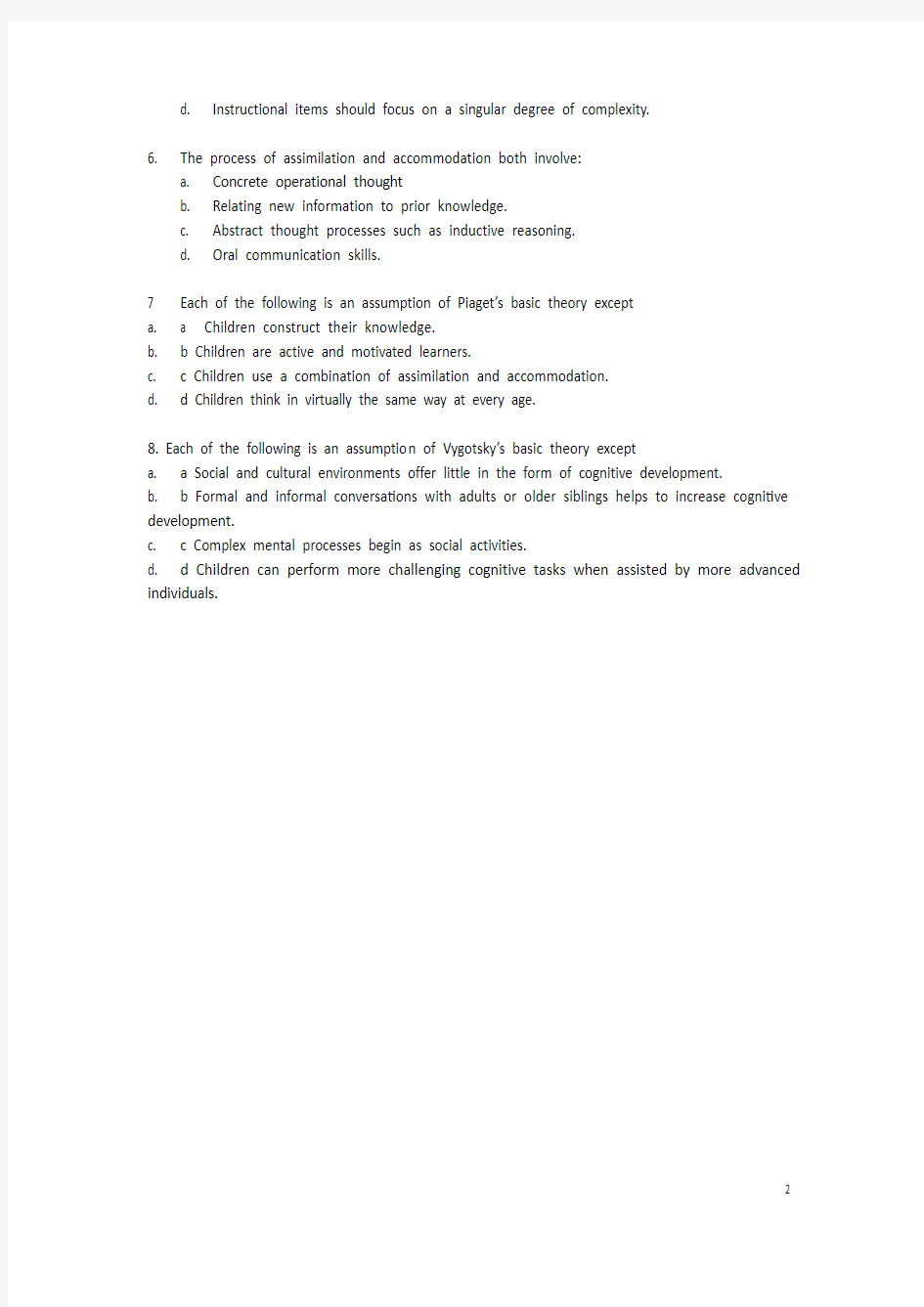unit exercises for chapter 4 constructive views of learning


Unit exercise for chapter 4
constructive views of learning
I Multiple-choice items
1. Irene knows how to count to ten. She counts the coins she has in her pocket (2 quarters, 5 dimes, and three nickels) and says, “I have ten cents”. From Piaget’s perspective, Irene is:
a. Accommodating the counting task to the fact that the different counts have different values.
b. Assimilating the counting task to the way she has counted things in the past.
c. Experiencing disequilibrium about how to count money.
d. Showing insufficient physiological maturation to perform the task correctly.
2 According to Piaget, the process of seeking balance between one's knowledge structures or beliefs and one's experiences.
a. Assimilation
b. Equilibration
c. Accommodation
d. Schemata
3. When new information consistent with one’s previous experiences and existing cognitive structures is fitted to existing schemata.
a. assimilation
b. accommodation
c. qualitative change
d. seriation
4. Which of the following situations best illustrates the process of assimilation?
a. A student adopts a new approach to a writing assignment after realizing that an approach learned earlier fails to work.
b. A child learns that she can be noisy when Grandma visits but she must be quiet and polite around Aunt Charlotte.
c. A student learns how to crack the security code for the school's computer.
d. A child attempts to ice skate by moving his/her legs in the same way that he/she does when they roller skat
e.
5. Vygotsky's concept of the Zone of Proximal Development has this implication for the classroom teacher.
a. Students should tend to gradually become more dependent on others for learning material.
b. Cooperative learning techniques are typically not appropriate or effective.
c. Instruction should focus just beyond the students' ability level.
d. Instructional items should focus on a singular degree of complexity.
6. The process of assimilation and accommodation both involve:
a. Concrete operational thought
b. Relating new information to prior knowledge.
c. Abstract thought processes such as inductive reasoning.
d. Oral communication skills.
7 Each of the following is an assumption of Piaget’s basic theory except
a. a Children construct their knowledge.
b. b Children are active and motivated learners.
c. c Children use a combination of assimilation and accommodation.
d. d Children think in virtually the same way at every ag
e.
8. Each of the following is an assumptio n of Vygotsky’s basic theory except
a. a Social and cultural environments offer little in the form of cognitive development.
b. b Formal and informal conversations with adults or older siblings helps to increase cognitive development.
c. c Complex mental processes begin as social activities.
d. d Children can perform more challenging cognitive tasks when assisted by more advanced individuals.
